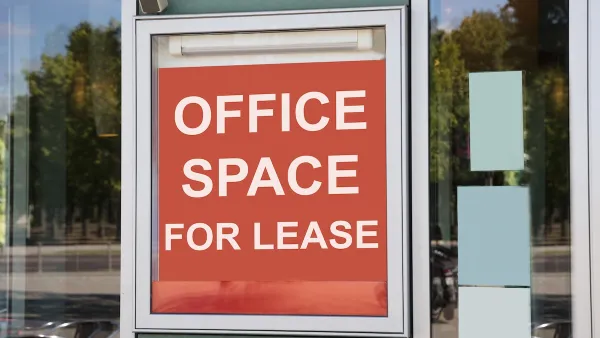Many federal agencies are sitting on underutilized buildings, causing a congressional committee to call into question the need for so much real estate.

A report from the U.S. Government Accountability Office reveals that 17 out of 24 federal agencies are only using 25 percent of their headquarters buildings’ office space, calling into question the need for the 360 million square feet of office space managed by the General Services Administration. Nish Amarnath reports on the issue for Smart Cities Dive.
Calling the finding ‘alarming,’ Senate Committee on Environment and Public Works Chairman Senator Tom Carper (D-Del) said at a hearing that the vacancy is “not a sustainable or fiscally responsible way to manage our federal real estate.”
With more federal workers working remotely, committee members called on the federal government to stop wasting taxpayer funds on empty or underutilized buildings. “Committees have done a lot of legislative work to support policies that will reduce emissions. I would be interested to know the emissions associated with heating and cooling these buildings that are unoccupied,” said Sen. Shelley Moore Capito (R-W.Va).
According to Amarnath, “Capito recommended that federal agencies identify their current and future space needs to help the GSA evaluate lease options or invest appropriately in existing buildings.” With many leases expiring in 2027, agencies could take this opportunity to reevaluate their needs. “David Marroni, acting director of physical infrastructure at the GAO, pointed to the importance of having more consistent benchmarks and targets for measuring and determining space utilization. That involves developing more uniform standards for space measurement and assessing what constitutes full utilization rather than using a one-size-fits-all approach, he said at the hearing.”
FULL STORY: ‘Empty’ federal buildings under scrutiny

National Parks Layoffs Will Cause Communities to Lose Billions
Thousands of essential park workers were laid off this week, just before the busy spring break season.

Retro-silient?: America’s First “Eco-burb,” The Woodlands Turns 50
A master-planned community north of Houston offers lessons on green infrastructure and resilient design, but falls short of its founder’s lofty affordability and walkability goals.

Delivering for America Plan Will Downgrade Mail Service in at Least 49.5 Percent of Zip Codes
Republican and Democrat lawmakers criticize the plan for its disproportionate negative impact on rural communities.

Test News Post 1
This is a summary

Test News Headline 46
Test for the image on the front page.

Balancing Bombs and Butterflies: How the National Guard Protects a Rare Species
The National Guard at Fort Indiantown Gap uses GIS technology and land management strategies to balance military training with conservation efforts, ensuring the survival of the rare eastern regal fritillary butterfly.
Urban Design for Planners 1: Software Tools
This six-course series explores essential urban design concepts using open source software and equips planners with the tools they need to participate fully in the urban design process.
Planning for Universal Design
Learn the tools for implementing Universal Design in planning regulations.
EMC Planning Group, Inc.
Planetizen
Planetizen
Mpact (formerly Rail~Volution)
Great Falls Development Authority, Inc.
HUDs Office of Policy Development and Research
NYU Wagner Graduate School of Public Service





























